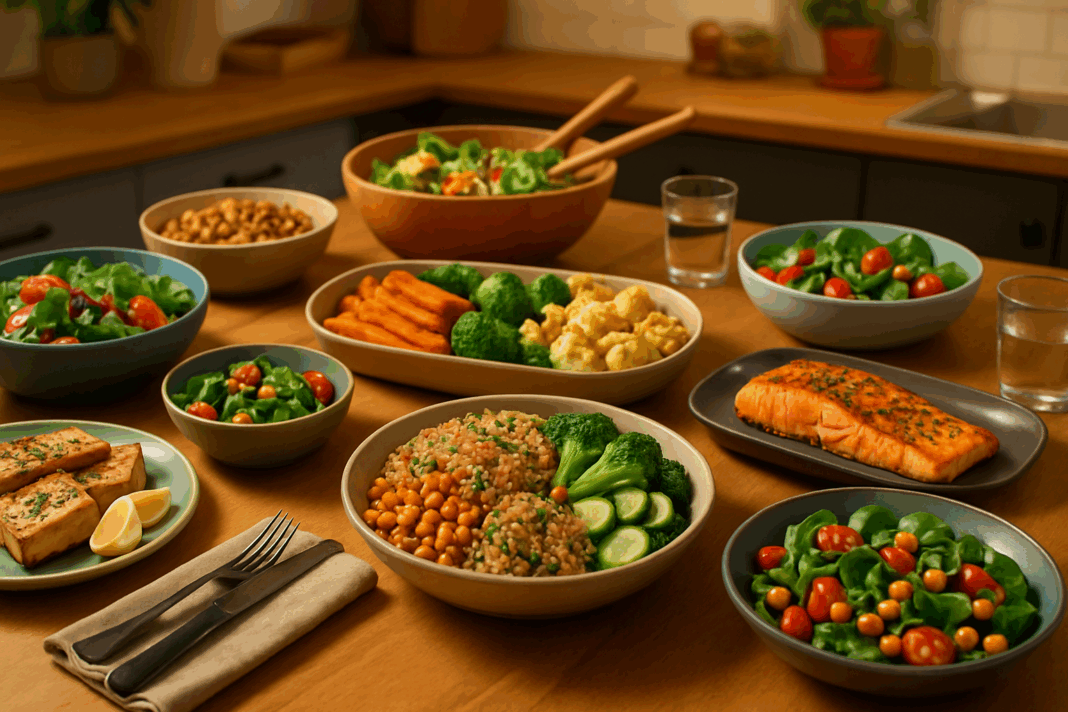In today’s fast-paced world, where processed convenience foods often dominate dinner tables, embracing whole food dinner ideas is more than just a wellness trend—it’s a transformative lifestyle decision. Choosing meals made from minimally processed ingredients nourishes the body in a way that supports sustained energy, digestive health, mental clarity, and long-term disease prevention. Backed by modern nutritional science and centuries of traditional dietary wisdom, whole food meals offer the perfect balance between simplicity, satisfaction, and optimal health.
For many, the transition toward a whole food diet may seem daunting, especially when faced with unfamiliar ingredients or time constraints. However, understanding what whole food meals truly are—and how to prepare them easily and affordably—can empower individuals and families to take ownership of their health. Whether you’re looking for inspiration, a practical whole food diet meal plan, or just asking, “Can someone give me a list of non processed dinner ideas that are still delicious?”—this article is your comprehensive guide to building a more mindful, nutritious, and enjoyable dinner routine.
You may also like: How a Whole Foods Diet Supports Sustainable Weight Loss: Expert Tips for Eating Whole Foods to Lose Weight Safely
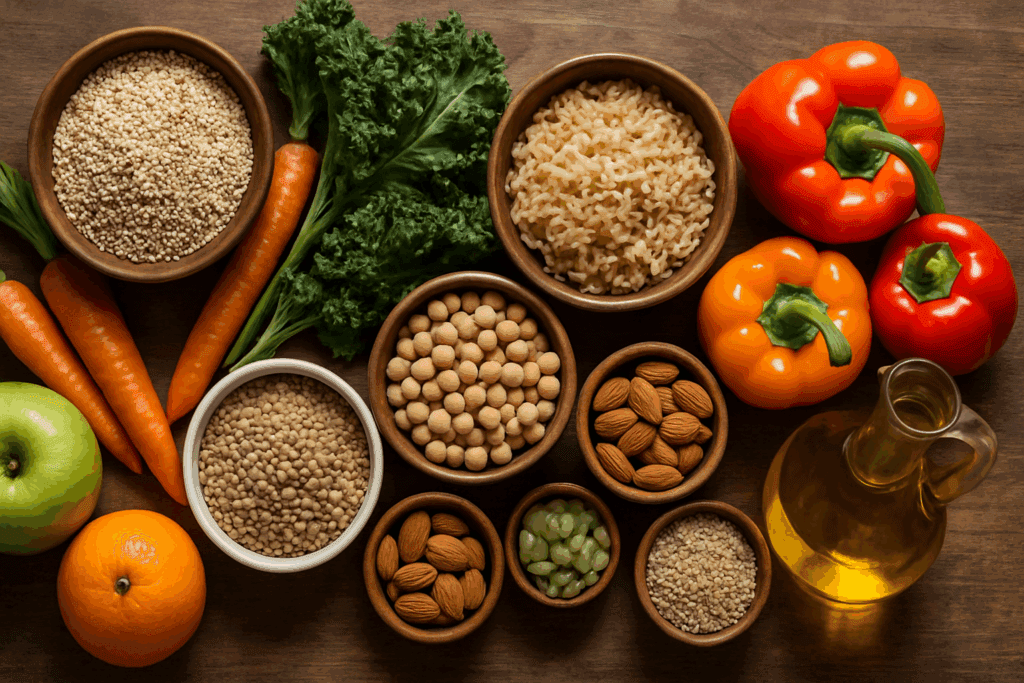
Understanding the Power of Whole Food Meals
At its core, a whole food meal is composed of ingredients that are as close to their natural state as possible. This means choosing foods that haven’t been stripped of their nutrients, altered with synthetic additives, or heavily refined. Whole grains like quinoa, oats, and brown rice; fresh vegetables and fruits; nuts, seeds, legumes, and clean proteins such as lentils or wild-caught fish are the staples of such meals. Whole food dinners exclude ultra-processed products—like pre-packaged dinners, refined white bread, or sugar-laden sauces—that often contain preservatives, artificial colors, or stabilizers.
Experts agree that the benefits of whole food meals go far beyond general wellness. Studies consistently show that diets rich in whole foods reduce the risk of heart disease, support better glycemic control in diabetics, and improve weight management outcomes. A diet built around whole food dinner ideas contributes to lower inflammation and a stronger immune system, while also enhancing gut health through higher fiber intake. In short, meals using whole foods fuel the body with the essential compounds it needs to perform and repair at every level.
What’s more, eating whole foods aligns with environmental sustainability goals. Many plant-forward whole food recipes are inherently lower in carbon footprint, especially when built around local, seasonal produce and plant-based proteins. Choosing whole food dinners is a way to support not only your health, but also the health of the planet.
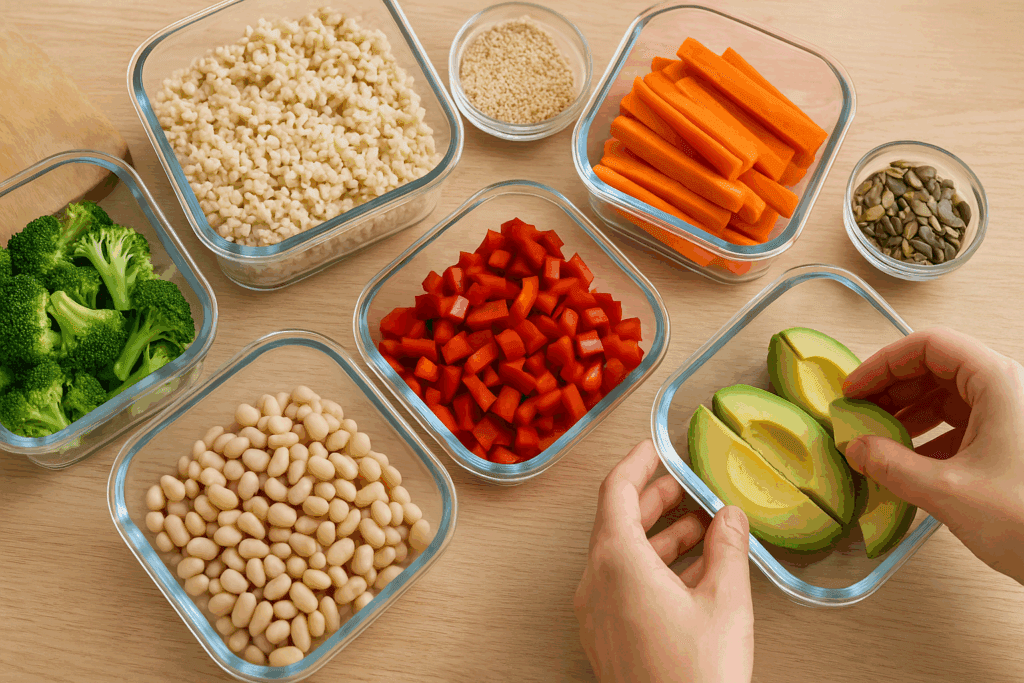
How to Eat More Whole Foods Without the Overwhelm
One of the most common barriers to transitioning into a whole food lifestyle is the perception that it’s complicated or time-consuming. In reality, learning how to eat more whole foods can start with simple, sustainable swaps. Choose fresh fruit over fruit snacks, cook whole grains instead of boxed grain mixes, or roast your own vegetables rather than relying on frozen varieties with added sauces.
Planning ahead plays a key role in success. Building a whole food diet meal plan for the week not only saves time and money, but also ensures that healthier choices are more readily available. Cooking in batches, using leftovers creatively, and prepping ingredients—like washing greens or pre-chopping vegetables—make it easier to stick to your plan, especially on busy nights. As you become more comfortable in the kitchen, you’ll naturally find ways to simplify your process without sacrificing flavor or nutrition.
When shopping, look for ingredients with minimal to no additives. Read labels carefully and aim to purchase single-ingredient staples. Building meals using whole foods doesn’t require fancy ingredients. Lentils, brown rice, canned tomatoes, garlic, spinach, and sweet potatoes can form the base of dozens of delicious meals. These easy unprocessed food recipes become staples not because they’re trendy—but because they’re versatile, affordable, and nutritionally rich.
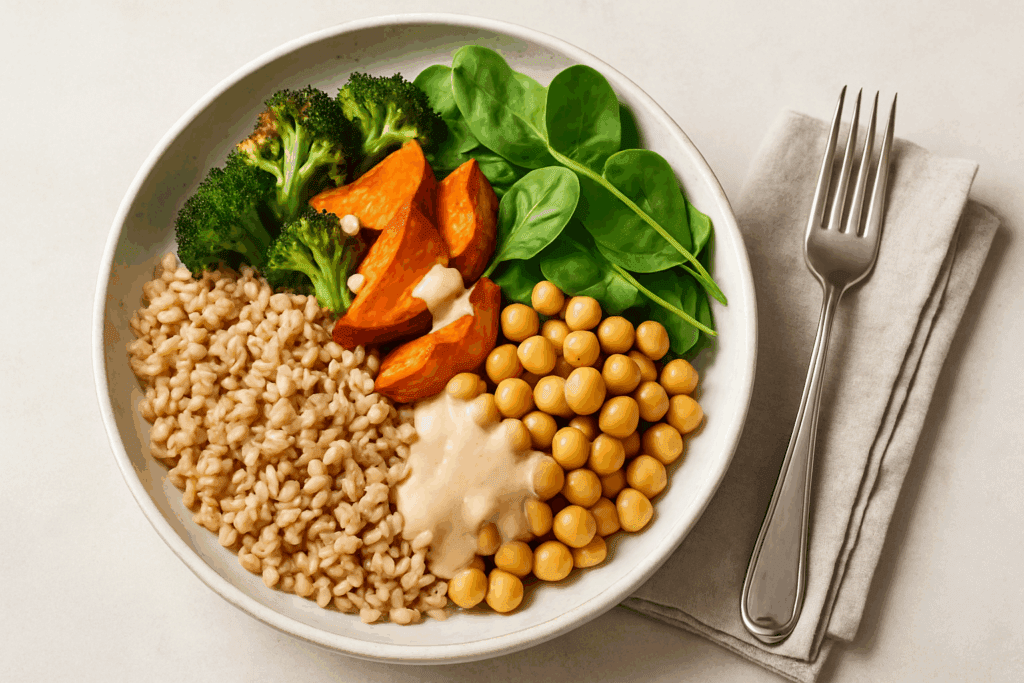
Meal Whole Food Examples for Balanced Nutrition
Whole food dinner ideas come in countless forms, depending on your tastes, dietary preferences, and culinary traditions. For instance, a classic grain bowl makes an excellent foundation: start with brown rice or farro, top it with roasted vegetables, chickpeas, greens, and a tahini-based dressing. This combination offers complete protein, fiber, antioxidants, and healthy fats.
Another popular option is a vegetable curry made with cauliflower, peas, carrots, and coconut milk, seasoned with turmeric, cumin, and ginger. Serve it over quinoa or millet for a meal that is deeply satisfying and anti-inflammatory. Or try a whole food take on shepherd’s pie using mashed sweet potatoes on top of lentils, mushrooms, onions, and herbs baked to perfection. These are just a few flavorful meal whole food examples that provide comfort and satiety without relying on processed ingredients.
The key is to create variety while focusing on whole ingredients. Think of meals as an interplay between grains, legumes or protein, colorful vegetables, and healthy fats. As you continue to explore new whole food recipes, you’ll build an intuitive understanding of what works for your body and your lifestyle, allowing your meals to be both functional and joyful.
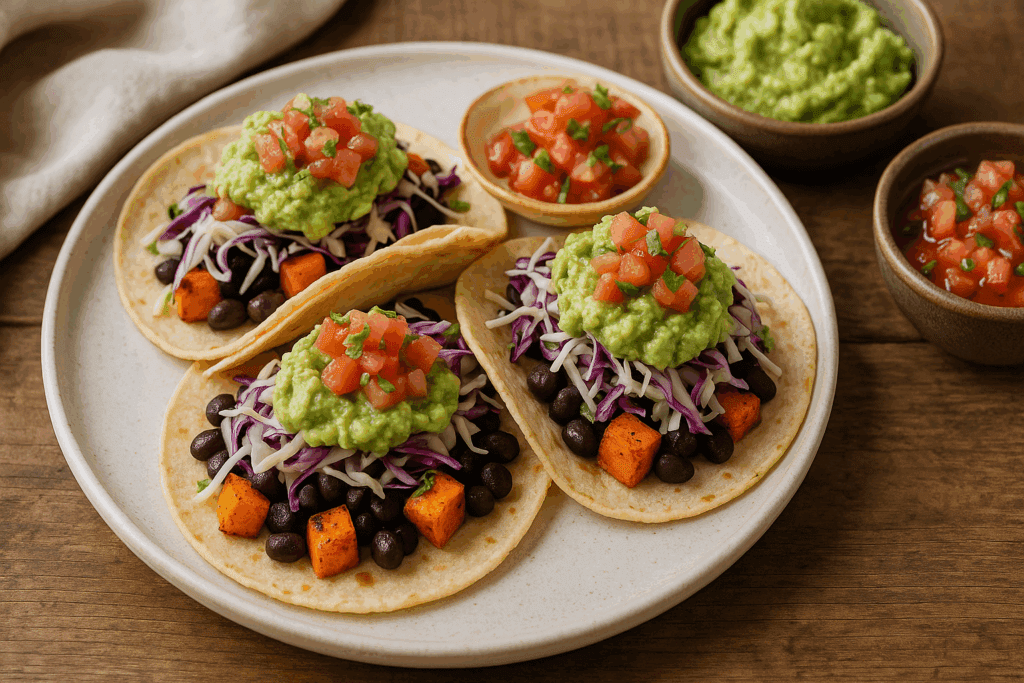
Unprocessed Food Recipes That Actually Taste Great
There’s a misconception that unprocessed food recipes lack excitement or flavor, but that couldn’t be further from the truth. Whole foods naturally offer a range of textures and tastes, and when prepared thoughtfully, they create incredibly satisfying meals. A simple black bean and roasted sweet potato taco with homemade guacamole, salsa, and cabbage slaw delivers bold flavor with nutritional balance.
For those who love pasta, try whole wheat spaghetti tossed with sautéed spinach, garlic, mushrooms, and a drizzle of olive oil. Add nutritional yeast for a cheesy, dairy-free punch and top it with toasted walnuts for crunch. You can also create a nourishing soup by simmering lentils, tomatoes, carrots, celery, and spices for a comforting one-pot meal that feeds the whole family.
If you’re looking for easy whole food recipes that can be made in under 30 minutes, think stir-fries, Buddha bowls, or sheet pan meals with roasted root vegetables and marinated tofu. These options are not only quick, but also pack a punch of vitamins, minerals, fiber, and phytonutrients. The more familiar you become with easy unprocessed food recipes, the more naturally they become part of your weekly routine.
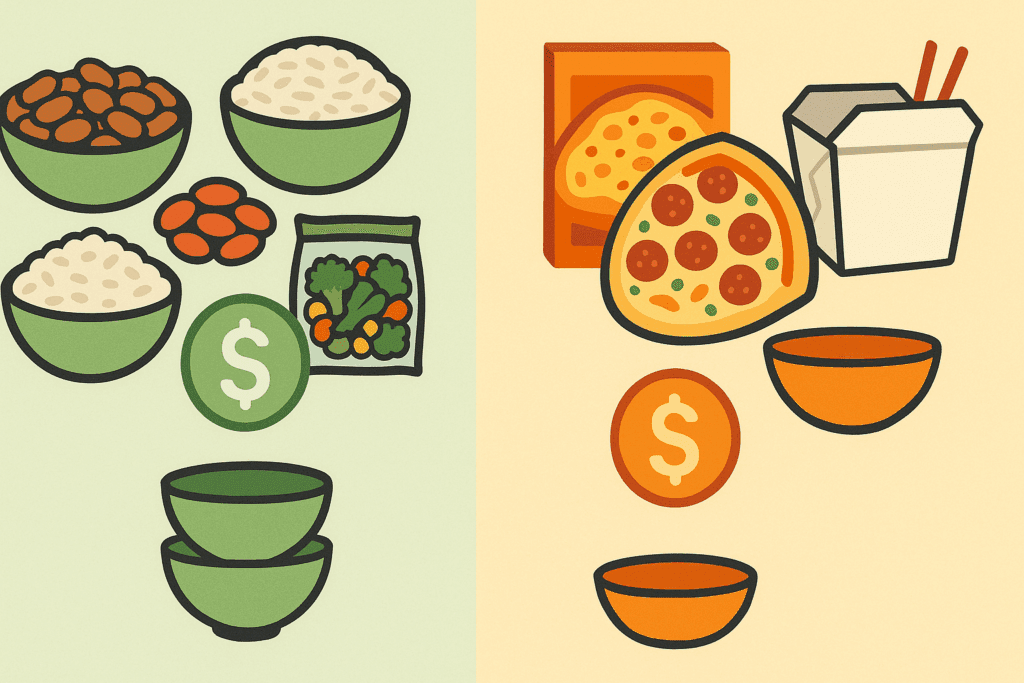
Whole Food Recipes on a Budget: Eat Well Without Overspending
Budget constraints often discourage people from choosing whole food meals, but in reality, eating whole foods can be one of the most cost-effective strategies for long-term health. Buying staples like beans, rice, oats, and lentils in bulk dramatically lowers cost per serving. Frozen produce offers the same nutrient density as fresh options and lasts longer, minimizing food waste.
A pot of chili made with dried beans, onions, canned tomatoes, bell peppers, and spices can provide multiple servings at a fraction of what a takeout dinner would cost. Grain salads with farro, roasted vegetables, and lemon vinaigrette are both affordable and satisfying. Eggs, canned sardines, or tofu provide high-quality protein without breaking the bank, and you can stretch them further by combining them with hearty grains and vegetables.
Whole food recipes on a budget require creativity, but they don’t demand sacrifice. Planning ahead and sticking to a core list of versatile ingredients—like whole grains, legumes, leafy greens, and root vegetables—makes it easier to prepare whole food dinners that are both nutritious and economical. This approach ensures that healthy eating is inclusive and sustainable, not exclusive or elite.
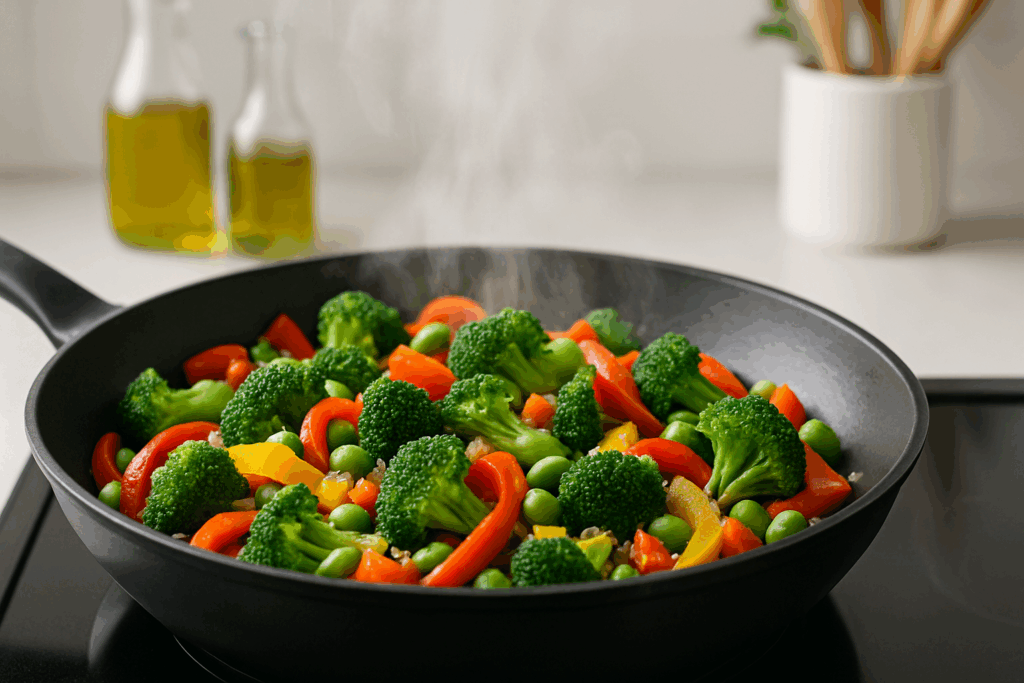
Simple Whole Food Dinner Ideas for Busy Weeknights
When time is short, you need quick, easy whole food recipes that don’t sacrifice nutrition. One of the best ways to streamline dinner is to follow a template. For example, pick a grain (like brown rice or quinoa), a protein (such as lentils or black beans), and two to three vegetables. Add a simple dressing or seasoning blend, and you have a complete meal.
A favorite go-to whole food dinner idea is a stir-fry made with frozen broccoli, bell peppers, and edamame, sautéed with garlic, ginger, and coconut aminos. Serve it over whole grain noodles or rice for a filling, nutrient-rich meal. Another option is a baked sheet pan meal with tempeh, sweet potatoes, red onions, and Brussels sprouts, finished with a balsamic glaze. These meals require minimal prep, cook quickly, and offer layers of flavor and nourishment.
Keeping a few pre-cooked items in your fridge—such as a batch of brown rice or roasted chickpeas—makes assembling whole food dinners even easier. These foundational ingredients allow you to build meals using whole foods in under 20 minutes, turning dinnertime from a chore into a creative, energizing ritual.
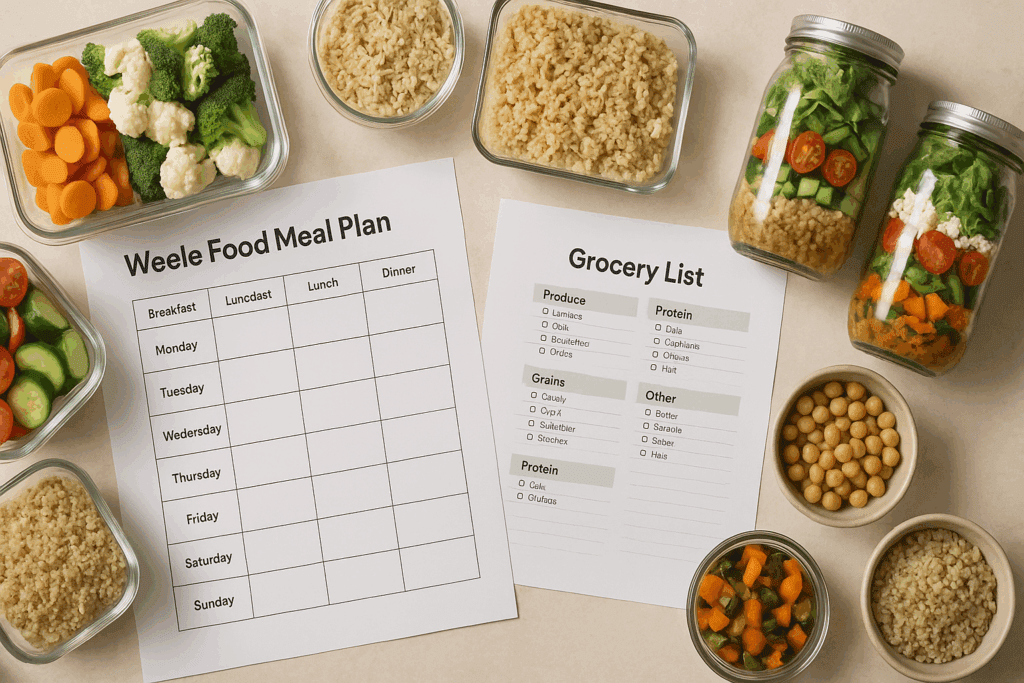
Whole Food Diet Meal Plan: Building Structure for Lasting Change
Consistency is key when it comes to reaping the full benefits of a whole food diet. A thoughtfully designed whole food diet meal plan takes the guesswork out of dinner and helps you stay on track with your health goals. It can also help you identify which recipes you love and which ingredients you use most often, simplifying your weekly grocery shopping.
A sample plan might include a Monday lentil and veggie stew, a Tuesday quinoa-stuffed peppers, a Wednesday chickpea curry, a Thursday black bean tacos night, and a Friday stir-fried rice with tofu and vegetables. The weekends could feature more relaxed meals like whole grain pasta with roasted vegetables or a hearty veggie burger with a side of oven-baked sweet potato fries.
These meals are designed to rotate ingredients and maximize nutrient intake while minimizing waste and effort. By preparing staples like grains and beans in advance, you save time throughout the week while ensuring you always have the building blocks for a wholesome dinner on hand. A strong whole food diet meal plan fosters both efficiency and variety—a winning formula for sustainable healthy eating.
Frequently Asked Questions (FAQ): Whole Food Dinner Ideas for a Healthier Lifestyle
Supplement to the article: “Whole Food Dinner Ideas for a Healthier Lifestyle: Easy, Unprocessed Meals Backed by Nutrition Experts”
1. How can I create more variety in my whole food dinner ideas without using processed ingredients?
Adding variety to your whole food dinners is easier than it seems once you explore global cuisines. Dishes from Mediterranean, Indian, Ethiopian, and Latin American cultures often center around whole ingredients and offer endless inspiration. For example, meal whole food examples like Moroccan tagine made with root vegetables and chickpeas or a lentil-based Indian dal bring depth and complexity without requiring processed shortcuts. You can rotate between grains like amaranth, millet, farro, and barley to shift textures and flavors. By exploring spices and herbs not typically used in your routine—such as sumac, za’atar, or fenugreek—you can reinvent easy unprocessed food recipes into entirely new experiences.
2. What are some practical strategies for transitioning kids to meals using whole foods?
Children are often more adaptable than adults give them credit for, but presentation matters. Transforming traditional comfort foods into whole food versions—like using whole wheat pasta with homemade veggie marinara or baking sweet potato fries instead of serving frozen ones—can ease the transition. Whole food dinner ideas for families can also include build-your-own meals, such as taco bowls with brown rice, black beans, corn, avocado, and fresh salsa. Involving kids in meal prep increases their willingness to try new foods and offers a natural way to teach them about nutrition. When choosing whole food recipes on a budget, focus on colorful, fun-to-eat items like rainbow veggie skewers or fruit kabobs that appeal to both the eyes and the palate.
3. Can whole food diet recipes support athletic performance or recovery after workouts?
Absolutely. Whole food meals offer the macro- and micronutrient density needed for muscle repair, endurance, and metabolic efficiency. Meals using whole foods that combine complex carbohydrates, plant-based protein, and healthy fats—such as quinoa and roasted chickpeas with tahini dressing—are excellent for post-workout recovery. Whole food diet meal plan strategies that focus on anti-inflammatory ingredients like turmeric, ginger, berries, and leafy greens can help reduce soreness and improve muscle regeneration. Easy whole food recipes like overnight oats with chia seeds and almond butter or a smoothie bowl with hemp seeds provide nutrient-rich fuel for active individuals. The key is to maintain a balance of nutrients while avoiding refined sugars and additives common in processed “energy” foods.
4. What are the long-term psychological benefits of consistently choosing whole food dinners?
Beyond physical health, regularly eating whole food dinners contributes to improved mood, better cognitive performance, and even reductions in symptoms of anxiety and depression. Research suggests that diets centered on whole food recipes promote a healthy gut microbiome, which in turn supports the gut-brain axis—a crucial link in mental health. Easy unprocessed food recipes also tend to be naturally rich in B vitamins, magnesium, and tryptophan, all essential for neurotransmitter function. People who build meals using whole foods often report improved emotional regulation and more stable energy levels, both of which can influence productivity and social well-being. By removing blood sugar swings and inflammation triggers associated with processed food, whole food dinners offer holistic psychological support over time.
5. How can I adapt whole food meal ideas for one-person households without wasting ingredients?
Cooking for one doesn’t have to mean eating repetitive or boring meals. With thoughtful planning, it’s easy to batch-prep ingredients that can be repurposed throughout the week. For instance, roast a pan of vegetables and use them in a grain bowl on Monday, a wrap on Tuesday, and a soup on Wednesday. Easy whole food recipes like mini lentil loaves, single-portion casseroles, or mason jar salads are ideal for solo eaters. Freezing portions of whole food dinners helps prevent spoilage and provides convenient future meals. For those asking, “Can you give me a list of non processed dinner ideas suitable for one?”—think stir-fry with tofu and frozen vegetables, chickpea stews, or whole wheat pita stuffed with tabbouleh and hummus.
6. What are some underused ingredients that work well in whole food dinner ideas?
While staples like broccoli, brown rice, and beans are well-known, other whole ingredients offer excellent nutritional benefits and culinary excitement. Kelp noodles, teff, kabocha squash, purslane, and black lentils are all underrated yet versatile. These ingredients can elevate whole food recipes while adding texture, flavor, and novel nutrients. For example, black lentils retain their shape well and are excellent in warm salads or as a protein base in easy unprocessed food recipes. Including more sea vegetables like kelp boosts iodine and trace minerals, supporting thyroid function. These lesser-used foods diversify your whole food diet meal plan and prevent palate fatigue, which is key to maintaining a whole food lifestyle.
7. How can I maintain a whole food diet while traveling or eating away from home?
Staying consistent while traveling requires a proactive but flexible approach. Focus on building meals using whole foods from what’s available—most grocery stores stock basics like fresh fruit, nuts, hummus, and whole grain crackers. At restaurants, scan menus for customizable options like grain bowls, build-your-own salads, or roasted vegetable platters. Many modern eateries now feature whole food meal ideas clearly labeled as gluten-free, vegan, or “clean,” making them easier to identify. Bringing snacks such as roasted chickpeas, energy balls made with dates and oats, or trail mix can help bridge gaps between meals. Although perfection isn’t always realistic, maintaining a mindset rooted in whole food recipes helps guide smarter decisions even in unfamiliar settings.
8. How do whole food meals support hormonal balance, especially in women?
Whole food dinners can be an important ally for hormonal health due to their fiber content, healthy fats, and absence of endocrine-disrupting chemicals found in some packaged foods. Cruciferous vegetables like broccoli and cabbage support estrogen metabolism in the liver, while seeds such as flax and sesame provide phytoestrogens that may ease hormonal fluctuations. Meals using whole foods that include fatty fish, avocado, or walnuts provide omega-3 fatty acids crucial for hormone production and mood regulation. Whole food diet recipes that emphasize blood sugar control—like those with balanced protein and complex carbs—help prevent the cortisol and insulin spikes that disrupt hormonal harmony. These benefits make whole food dinner ideas particularly helpful for managing symptoms related to menstruation, perimenopause, and thyroid imbalances.
9. What are some emerging trends or innovations in whole food diet meal planning?
One growing trend is AI-powered meal planning apps that tailor whole food dinner ideas to individual nutrient needs and food sensitivities. Another is the rise of “zero-waste” cooking, which aligns with the whole food philosophy by using stems, peels, and even vegetable tops in easy whole food recipes. Fermented foods are also gaining popularity for their dual role in gut health and flavor enhancement. People are increasingly seeking whole food recipes on a budget that emphasize seasonality and regenerative agriculture. Additionally, plant-based meal kits focusing on meals using whole foods—rather than soy isolates or ultra-processed meat alternatives—are carving out a niche for busy professionals looking for nutrient-dense convenience.
10. What mindset shifts help sustain a lifestyle centered around whole food dinners?
Sustainable dietary change isn’t just about habit—it’s about identity and values. Viewing whole food meals as a form of self-respect and empowerment rather than restriction helps maintain motivation. It’s helpful to stop thinking of a whole food diet meal plan as a short-term fix and start seeing it as a lifelong wellness tool. Celebrating small wins, like mastering a new whole food recipe or noticing better energy, reinforces consistency. For those wondering how to eat more whole foods without giving up joy, the answer lies in curiosity and creativity. Over time, whole food dinners become less of a goal and more of a natural expression of self-care and conscious living.
Conclusion: Why Whole Food Dinners Are the Smartest Choice for Your Health
Whole food dinners aren’t just a short-term fix—they are a foundational step toward achieving a healthier, more energized, and more resilient version of yourself. Backed by science and supported by nutrition experts around the world, these meals offer a proven way to manage weight, stabilize blood sugar, improve digestion, and prevent chronic disease—all while tasting genuinely good.
Incorporating whole food dinner ideas into your lifestyle doesn’t require perfection or expensive ingredients. It simply asks for a mindful shift—choosing meals using whole foods more often, exploring unprocessed food recipes, and making room for nutrient-dense ingredients at your table. Whether you’re cooking easy whole food recipes for your family or searching for whole food recipes on a budget that don’t compromise on taste, the journey toward better health begins with what you put on your plate.
When you start asking yourself how to eat more whole foods or looking for meal whole food examples that match your schedule and taste preferences, you’ve already taken the most important step: awareness. And with that awareness comes empowerment—the ability to nourish yourself with intention, joy, and long-lasting impact. Your body, your mind, and your future will thank you for every whole food dinner you choose.
Was this article helpful? Don’t let it stop with you. Share it right now with someone who needs to see it—whether it’s a friend, a colleague, or your whole network. And if staying ahead on this topic matters to you, subscribe to this publication for the most up-to-date information. You’ll get the latest insights delivered straight to you—no searching, no missing out.
Further Reading:
26 Days of Healthy Whole Food Dinners
Clean-Eating Meal Plan for Beginners, Created by a Dietitian
Healthy Eating: Easy Healthy Recipes To Maximize Nutrition!
Disclaimer
The information contained in this article is provided for general informational purposes only and is not intended to serve as medical, legal, or professional advice. While NewsHealthWatch strives to present accurate, up-to-date, and reliable content, no warranty or guarantee, expressed or implied, is made regarding the completeness, accuracy, or adequacy of the information provided. Readers are strongly advised to seek the guidance of a qualified healthcare provider or other relevant professionals before acting on any information contained in this article. NewsHealthWatch, its authors, editors, and contributors expressly disclaim any liability for any damages, losses, or consequences arising directly or indirectly from the use, interpretation, or reliance on any information presented herein. The views and opinions expressed in this article are those of the author(s) and do not necessarily reflect the official policies or positions of NewsHealthWatch.

